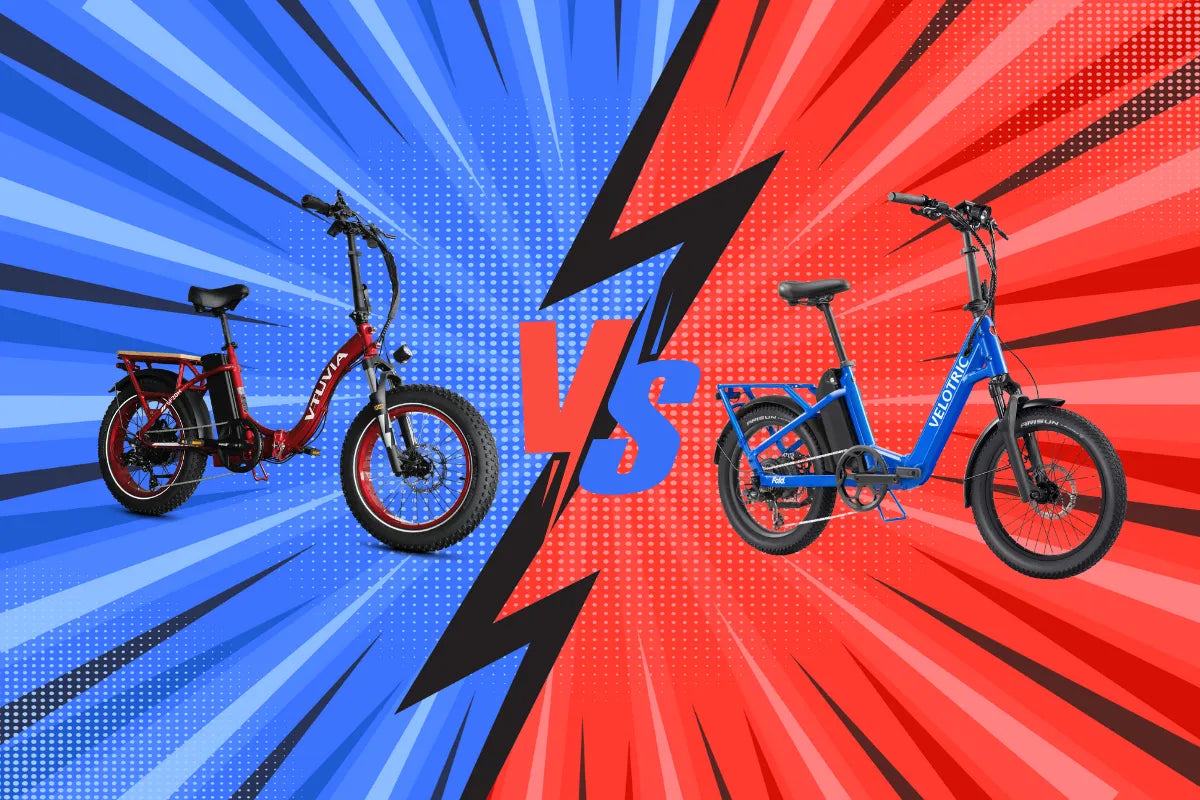Demystifying Bike Fenders: What Are They and Why Are They Essential?
I. What is a fender on a bike?
Fenders are accessories that attach to the wheels of a bike to prevent mud, water, and other debris from splashing onto the rider, the bike, or other road users. Fenders can enhance bike performance in several ways, such as:
- Improving comfort and safety
- Reducing maintenance and repair costs
- Enhancing aerodynamics and speed
These are some of the ways that fenders can enhance bike performance. Of course, there are different types of fenders that suit different types of bikes and riding conditions. Some fenders are permanent and require mounting hardware, while others are clip-on and easy to install or remove. Some fenders are full-length and cover most of the wheel, while others are partial and cover only a section of the wheel. Some fenders are made of metal and durable, while others are made of plastic and lightweight. You should always choose fenders that match your bike size, style, and preference.

II. What Are Bike Fenders?
Definition and Function of Bike Fenders
Bike fenders are bike accessories that are attached to the wheels of a bicycle to prevent water, mud, or other debris from splashing onto the rider or the bike. They are also known as mudguards in some countries1. Bike fenders can be useful for cyclists who ride in wet or muddy conditions, as they can keep them dry and clean. Bike fenders can also enhance the appearance and style of a bike, especially on cruiser bikes that have matching or contrasting colors.
Bike fenders are a useful and stylish accessory for bicycles that can protect the rider and the bike from water, mud, and debris. Bike fenders have evolved along with bicycles over time, reflecting the needs and preferences of cyclists in different contexts and cultures. They are not only functional but also aesthetic elements of bicycle design.
III. Types of Bike Fenders
Full-Length Fenders: Benefits and Drawbacks
Benefits:
Full-length fenders are the most effective type of fenders, as they can protect you and your bike from water, mud, and debris, as well as reduce the spray to other cyclists or pedestrians.
Full-length fenders can prolong the life of your bike' s components, such as the chain, derailers, brakes, and headset, by preventing them from getting sprayed with dirty water.
Full-length fenders can enhance the appearance and style of your bike, especially on touring, commuter, vintage, or cruiser bikes that have matching or contrasting colors.
Drawbacks:
Full-length fenders require mounting points on the frame and fork of the bike, which not all bikes have. They also require enough clearance between the tire and the frame, which some bikes may not have.
Full-length fenders are more permanent and less convenient than clip-on fenders, which can be easily attached or removed. They are also heavier and bulkier than other types of fenders.
Full-length fenders can be susceptible to damage by surging motion of the vessel, such as when riding over bumps or potholes. They can also roll up the face if not suitably restrained.
Clip-On Fenders: Pros and Cons
Pros:
Clip-on fenders are lightweight, removable, and compatible with most bikes. You can switch them between multiple bikes and take them off when the weather' s good.
Clip-on fenders are affordable and easy to use. You don' t need any tools or bolts to install them, and they usually come with adjustable straps or clamps to fit different wheel sizes and shapes.
Clip-on fenders are stylish and customizable. You can choose from different colors, shapes, and designs to match your bike and your personality. Some clip-on fenders are even foldable and packable.
Cons:
Clip-on fenders are less stable and less effective than full-length fenders. They can flap around, rub, or jostle over bumpy terrain, and they may not cover enough of the wheel to prevent spray from hitting you or your bike.
Clip-on fenders are less durable and less reliable than full-length fenders. They can break, crack, or fall off easily, especially if they are made of thin plastic or have weak clips or straps.
Clip-on fenders may not be compatible with some bikes, such as full-suspension mountain bikes, fat bikes, or bikes with disc brakes. They may interfere with the suspension travel, the tire width, or the brake calipers.
DIY Fenders: How to Make Your Own
If you want to make your own DIY fenders for your bike, you can follow these steps:
First, you need to find a suitable material for your fenders.
Next, you need to choose a template for your fenders.
Then, you need to cut out the fender from your material, using the template as a reference.
After that, you need to drill the mounting holes on the fender.
Next, you need to bend the fender to fit the curve of your wheel.
Finally, you need to attach the fender to your bike using bolts, washers, and zip ties.
IV. Advantages of Using Bike Fenders
Protection Against Mud, Water, and Debris
This is the most obvious and practical reason to use bike fenders. If you ride on wet or muddy roads, bike fenders can block the spray from your tires and prevent it from hitting your face, clothes, or shoes. This can make your ride more comfortable and enjoyable, especially if you commute by bike or ride for long distances.
Maintaining Cleanliness and Safety
Bike fenders can also improve your safety and visibility on the road. By blocking the spray from your tires, bike fenders can prevent water or mud from getting into your eyes or obscuring your vision. This can help you see better and avoid potential hazards or collisions. Bike fenders can also make you more visible to other road users, especially if they have reflective features or lights attached to them.
Prolonging Bike Lifespan and Reducing Maintenance
Bike fenders can also make your bike look more attractive and unique. You can choose from different shapes, sizes, colors, and designs of bike fenders to match your bike and your personality. Some bike fenders are even customizable or foldable for convenience and versatility.
V. How to Choose the Right Fenders for Your Bike
Considering Bike Type and Wheel Size
The next thing you need to do is to choose the right size and shape of fenders for your bike. The size of the fenders depends on the size of your wheels and tires. You should choose fenders that are slightly wider than your tires, so they can cover them fully and prevent spray from escaping. The shape of the fenders depends on the type of bike and the style of riding. You should choose fenders that are curved to fit the shape of your wheel and have flaps or extensions at the end to prevent spray from hitting you or other riders.
Materials and Durability
If you live in a rainy or muddy area, you may want to invest in fenders that can withstand wet weather and keep you dry and clean. If you live in a dry or sunny area, you may only need fenders occasionally or not at all. You may want to choose fenders that are easy to attach and detach, depending on the forecast.
Installation and Compatibility
If you ride mostly on paved roads or trails, you may prefer full-coverage fenders that protect you and your bike from water and mud. If you ride off-road or in rough terrain, you may want shorter or more flexible fenders that can handle bumps and vibrations. You may also want to consider the weight and aerodynamics of the fenders, especially if you are a performance-oriented rider.
VI. Installing Bike Fenders Step by Step
Preparing Your Bike for Fender Installation
Installing bike fenders is a great way to protect yourself and your bike from water, mud, and dirt when riding in wet weather. Bike fenders come in different types and sizes, depending on your bike and your preference. Here are some general steps to install bike fenders on your bike:
First, you need to choose the right type and size of bike fenders for your bike.
Next, you need to gather the tools and materials you need for the installation.
Then, you need to install the front fender. You may need to remove the front wheel to make it easier.
After that, you need to install the rear fender. You may also need to remove the rear wheel for this step.
Finally, you need to check and trim any excess length of the support arms or zip ties.
VII. Maintaining and Cleaning Bike Fenders
Maintaining and cleaning bike fenders is an important part of bike maintenance, especially if you ride in wet or muddy conditions. Bike fenders can protect you and your bike from water, dirt, and debris, but they also need to be cleaned regularly to prevent rust, corrosion, or damage.
VIII. Fenders and Riding Styles
Fenders are accessories that attach to the wheels of a bike or a motorcycle to prevent water, mud, or dirt from splashing onto the rider or the vehicle. Fenders can also enhance the appearance and style of the bike or motorcycle, depending on the type and design of the fenders. Different riding styles may require different kinds of fenders, depending on the terrain, weather, and preference of the rider.
IX. Fenders and Seasonal Riding
Fenders and seasonal riding are two topics that are related to each other, as fenders can make a big difference in your riding experience when the weather and trail conditions change. Fenders are accessories that attach to the wheels of your bike or motorcycle to prevent water, mud, or dirt from splashing onto you or your vehicle. Fenders can also enhance the appearance and style of your bike or motorcycle, depending on the type and design of the fenders.
X. Fenders and Bike Performance
Fenders and bike performance are two topics that are related to each other, as fenders can affect the aerodynamics, weight, and comfort of your bike. Fenders are accessories that attach to the wheels of your bike to prevent water, mud, or dirt from splashing onto you or your bike. Fenders can also enhance the appearance and style of your bike, depending on the type and design of the fenders.
XI. Customizing Your Bike Fenders
Customizing your bike fenders is a fun and creative way to personalize your bike and make it stand out from the crowd. You can customize your bike fenders with different colors, shapes, patterns, stickers, decals, or paint.
XII. Environmental and Social Impact of Fenders
Fenders are accessories that attach to the wheels of a bike or a motorcycle to prevent water, mud, or dirt from splashing onto the rider or the vehicle. Fenders can also enhance the appearance and style of the bike or motorcycle, depending on the type and design of the fenders. Fenders can have both environmental and social impacts, depending on how they are made, used, and disposed of.
XIII. Frequently Asked Questions (FAQs)
Are bike fenders necessary for all bikes?
Bike fenders are not necessary for all bikes, but they can be very useful for some types of riding and some types of bikes. Bike fenders are accessories that attach to the wheels of a bike to prevent water, mud, or dirt from splashing onto the rider or the bike. Bike fenders can also enhance the appearance and style of the bike, depending on the type and design of the fenders.
Can fenders be installed on bikes with disc brakes?
Yes, fenders can be installed on bikes with disc brakes, but you need to choose the right type and size of fenders that are compatible with your bike and your brakes. Disc brakes are a type of brake system that use a metal disc attached to the wheel hub and a caliper that squeezes the disc to slow down or stop the bike. Disc brakes have some advantages over rim brakes, such as better performance in wet or muddy conditions, less wear and tear on the rims, and more modulation and control.
What should I do if my fenders rattle or loosen during rides?
If your fenders rattle or loosen during rides, it means that they are not properly secured or adjusted to your bike. This can be annoying and potentially dangerous, as the fenders may interfere with your brakes, gears, or wheels.
XIV. Conclusion
Fender benefits are the advantages that fenders can provide for you and your bike or motorcycle. Fenders are accessories that attach to the wheels of your bike or motorcycle to prevent water, mud, or dirt from splashing onto you or your vehicle. Fenders can also enhance the appearance and style of your bike or motorcycle, depending on the type and design of the fenders.
Bike fenders are accessories that attach to the wheels of a bike to prevent water, mud, or dirt from splashing onto the rider or the bike. Bike fenders can also enhance the appearance and style of the bike, depending on the type and design of the fenders. If you are a bike enthusiast or a casual rider, you may want to consider embracing bike fenders for your bike.





Share:
Unveiling the Truth: Is Cycling Bad for Knees?-VTUVIA EBIKE
Biking for Arthritic Knees: A Guide to Benefits, Safety, and Precautions